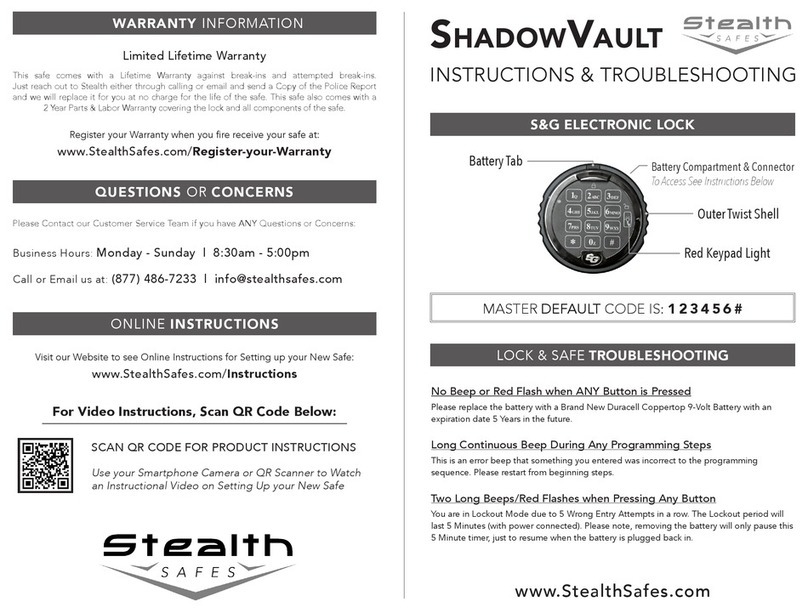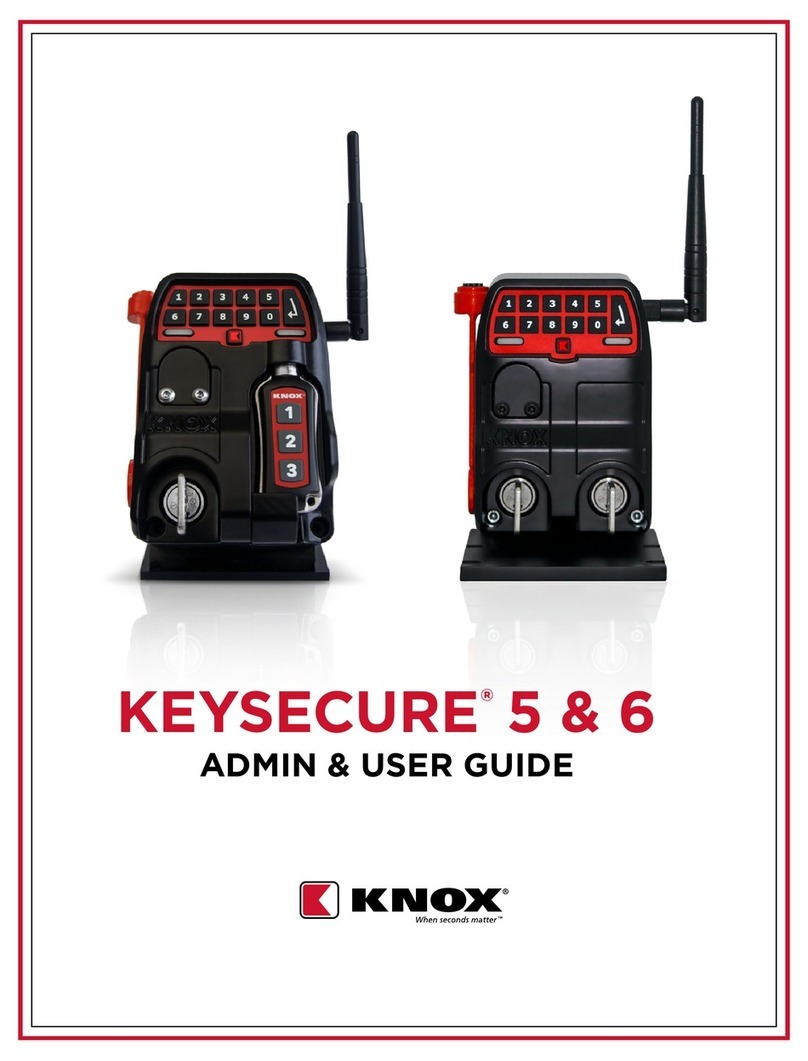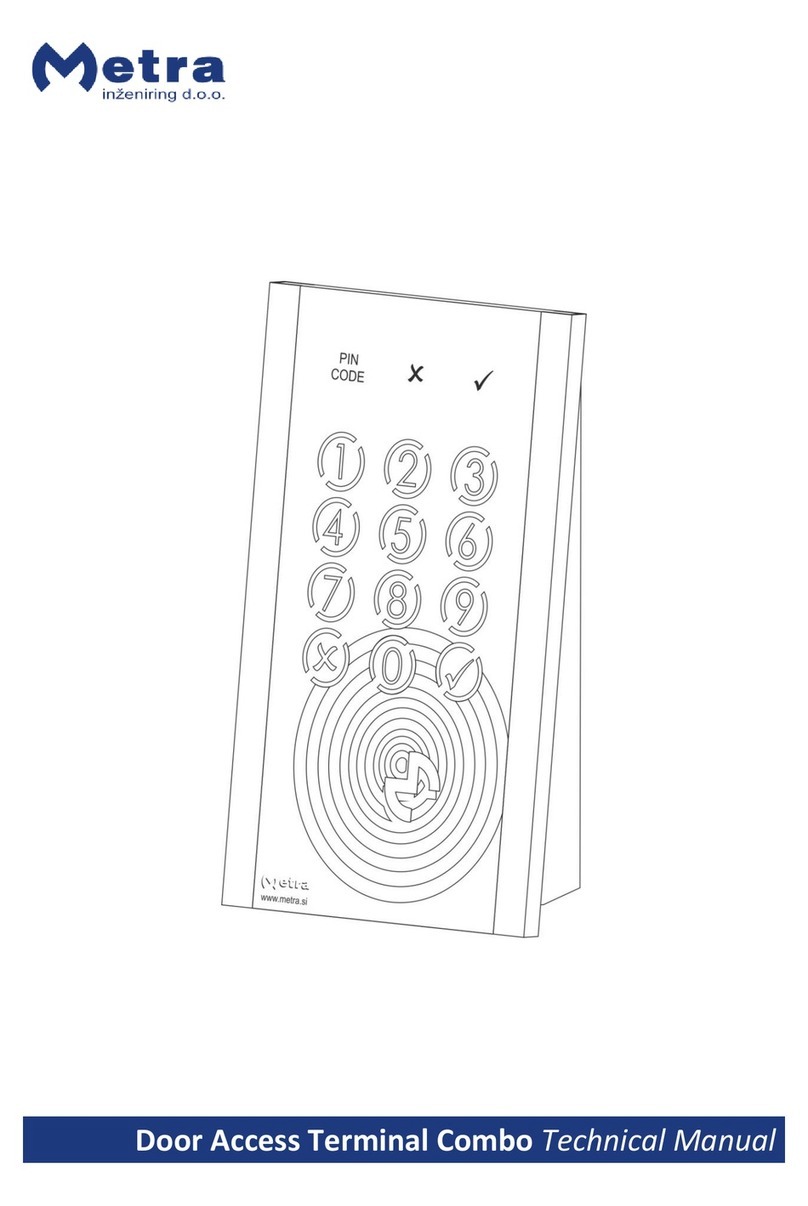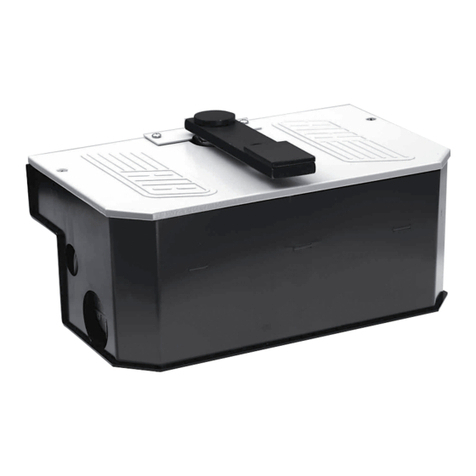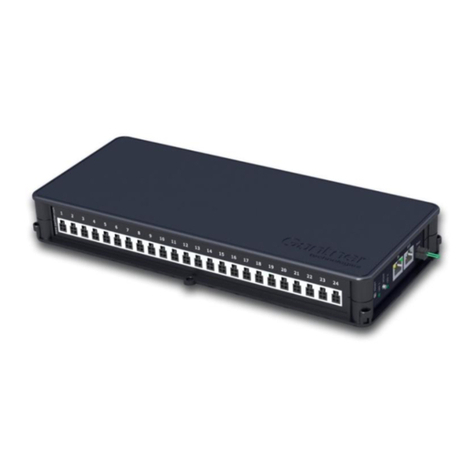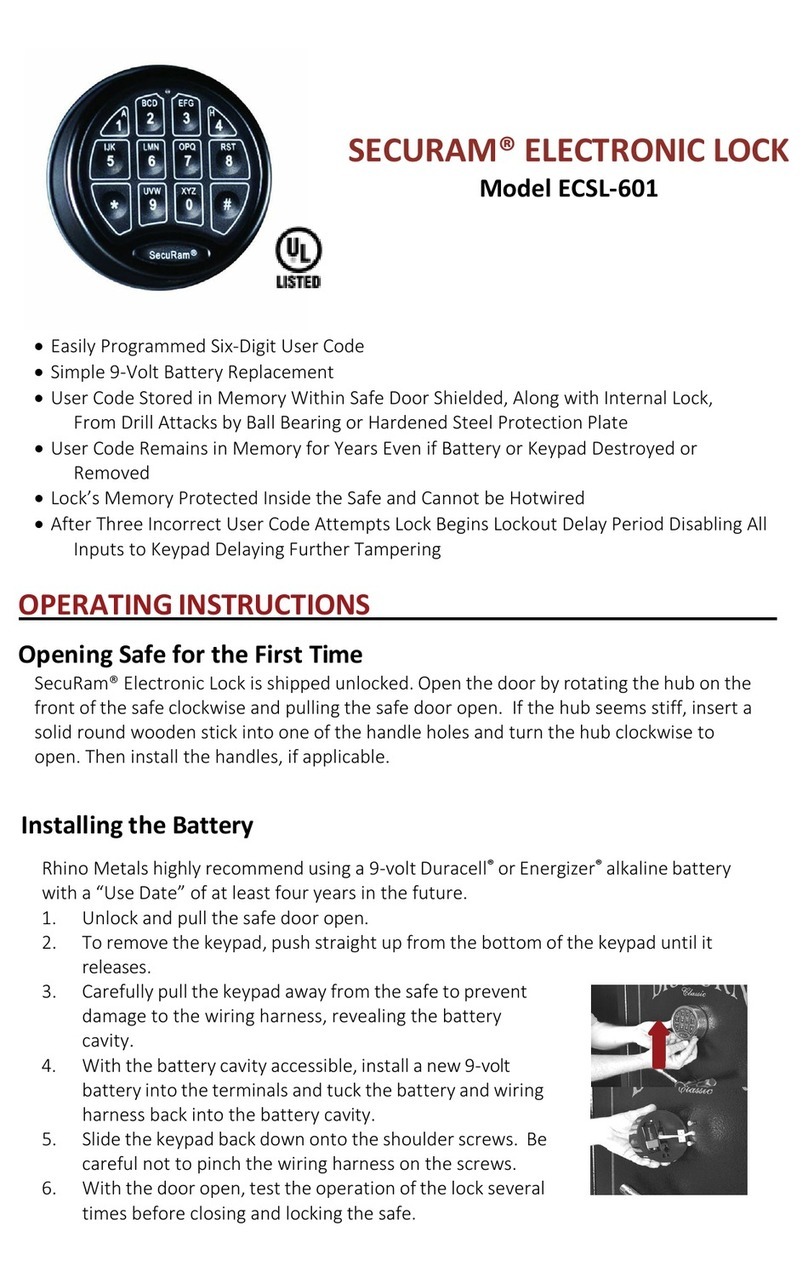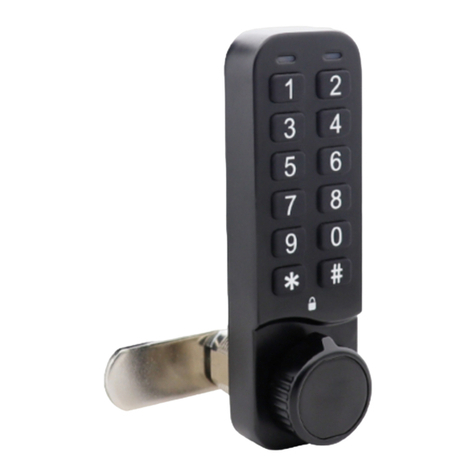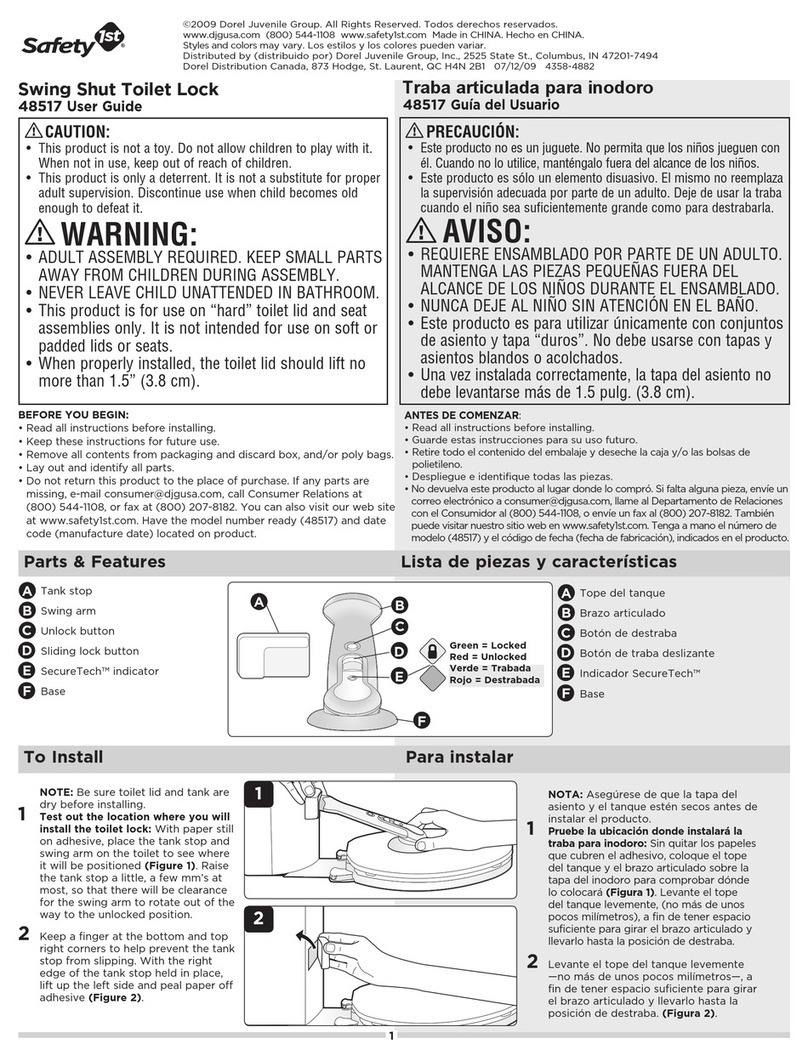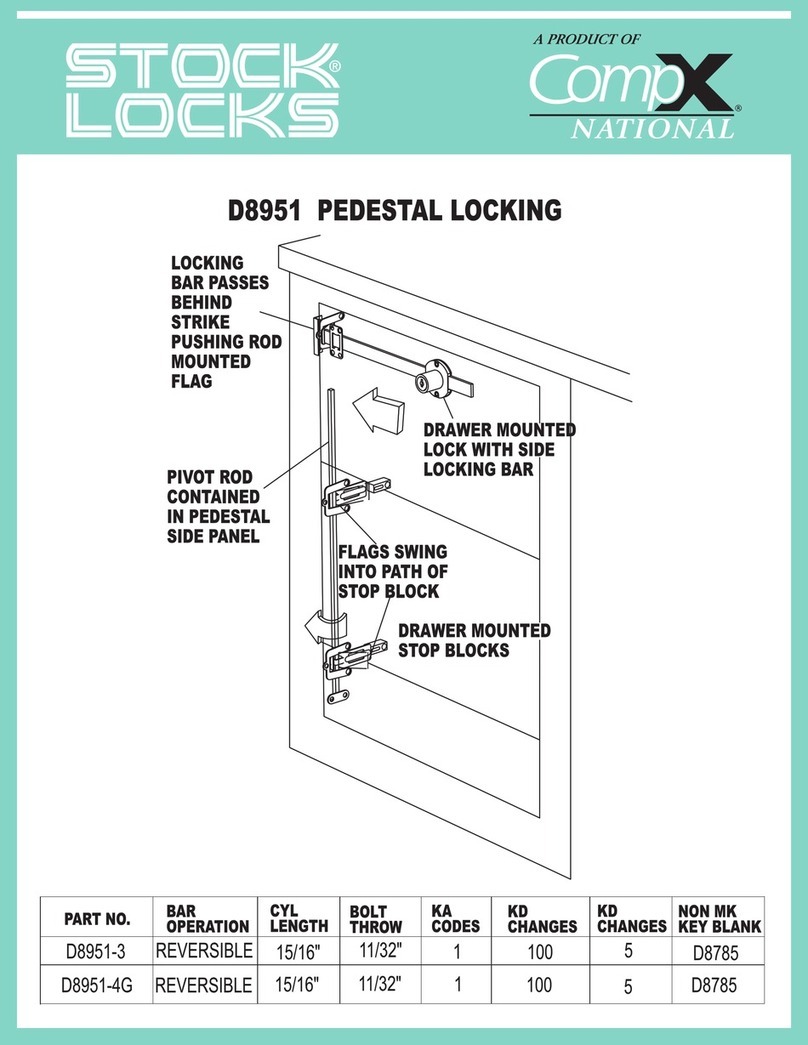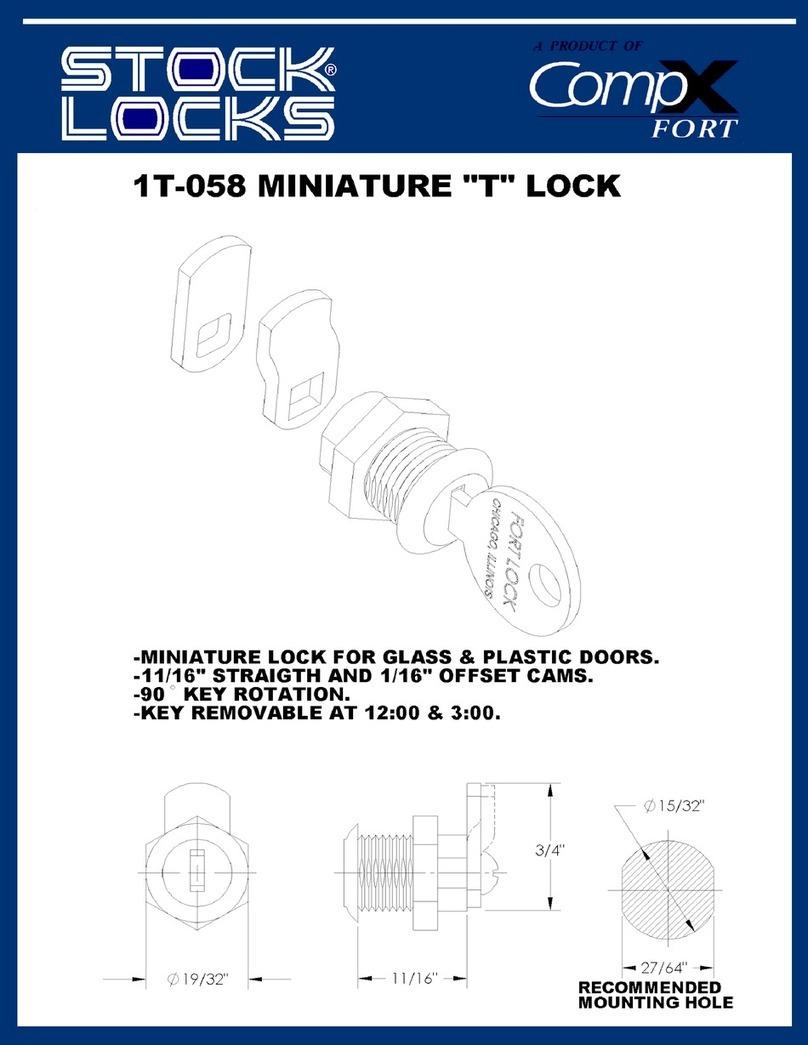
The retaining system for high pressure hoses
H) Installation/Positioning of the Cablelock AS retaining system:
Before starting please read and consider the information on the cover page and in the standard A) Functional description:
BGI 5100 carefully! Avoid chafing on adjacent components! The 'AS' retaining system prevents the pressure hose
from uncontrolled whipping into the surrounding area
in case of a tear-out from the crimping ferrule. This is
Basic formula for the radius of tear-out: possible as the Cablelock 'basic' tensioner lock is fixed
X-Y = min. FL+20mm, max. FL+170mm to the hose and the fixing bracket to the fixation point through
'Length of the cable bow minus shortest distance of the fixation points' the cable (the fixation point consists of the crimping ferrule
and the hose fitting). The length of the cable has to be
Position of the tensioner lock 'basic': dimensioned in that way that there is a possibility for the
Z = min. 50mm, max. 100mm hose to slip out of the crimping ferrule (to ensure a pressure
ATTENTION: If the hose is lead in a bend, NEVER install the
tensioner locks 'basic' in the outer region of the bending radius!
1) Enlarge the pre-mounted cable sling by hand and place it moveable on the hose.
2) Attach the bracket and screw down the end of the hose tightly (union nut/external thread or flange plate). DN5-8 (AD11-19) 3mm 12,5 x 2,0 CL-AS-E125 DN12-16 (AD19-31) 4mm 8,5 x 4,0 CL-AS-S085
3) Push the hose-sided tensioner lock 'basic' including the cable sling towards the hose. DN5-8 (AD11-19) 3mm 14,5 x 2,0 CL-AS-E145 DN20-25 (AD26-44) 4mm 10,5 x 4,0 CL-AS-S105.1
The hose-sided fixpoint has to be located 50mm to 100mm behind the end of the crimping ferrule. DN5-8 (AD11-19) 3mm 17,0 x 2,0 CL-AS-E170 DN32 (AD43-52) 5mm 10,5 x 4,0 CL-AS-S105.2 DN5 450bar 60mm - 0,40
4) If the hose-sided fixation point is chosen according to 3) attach the Cablelock AS-Tape if desired. DN8-10 (AD14-23) 3mm 18,5 x 2,0 CL-AS-E185 DN20-25 (AD26-44) 4mm 12,5 x 4,0 CL-AS-S125.1 DN6 450bar 75mm 150mm 0,65
Afterwards install the tensioner lock 'basic' according to the enclosed installation manual starting at point D4). DN8-10 (AD14-23) 3mm 20,5 x 2,0 CL-AS-E205 DN32-50 (AD43-74) 5mm 12,5 x 4,0 CL-AS-S125.2 DN8 450bar 85mm - 0,70
5) Please make sure that the brackets of the 'E' series are able to rotate even after final assembly (after union nut DN10-12 (AD17-28) 3mm 22,5 x 2,5 CL-AS-E225 DN25 (AD34-44) 4mm 14,5 x 4,0 CL-AS-S145.1 DN10 450bar 90mm 150mm 0,85
has been tightened firmly). DN10-12 (AD17-28) 3mm 24,5 x 2,5 CL-AS-E245 DN32 (AD43-52) 5mm 14,5 x 4,0 CL-AS-S145.2 DN12 450bar 130mm 200mm 1,15
6) The brackets of the 'S' and 'P' series always have to be installed with the appropriate screws (not too small and DN16-20 (AD23-35) 4mm 27,0 x 2,5 CL-AS-E270 DN32-40 (AD43-61) 5mm 16,5 x 4,0 CL-AS-S165 DN16 420bar 150mm 240mm 1,40
at least 8.8). Furthermore they have to be installed with the torque recommended in the DIN, so that the head DN16-20 (AD23-35) 4mm 30,5 x 3,0 CL-AS-E305 DN40-50 (AD50-74) 5mm 20,5 x 4,0 CL-AS-S205 DN20 420bar 180mm 240mm 1,80
of the screw presses against the bracket with this torque. DN20-25 (AD26-44) 4mm 34,0 x 3,0 CL-AS-E340 DN25 420bar 230mm 300mm 2,30
36,5 x 3,0 CL-AS-E365 DN32 325bar 420mm 460mm 3,35
Machine-sided fixation points for Cablelock AS (see also text above): DN20-25 (AD26-44) 4mm 42,5 x 3,0 CL-AS-E425.1 DN40 290bar 500mm 560mm 3,90
DN32 (AD43-52) 5mm 42,5 x 3,0 CL-AS-E425.2 DN5-12 (AD11-28) 3mm 9,0 x 3,0 CL-AS-P090 DN50 250bar 630mm 660mm 5,30
45,5 x 3,0 CL-AS-E455 DN16-25 (AD23-44) 4mm 11,0 x 4,0 CL-AS-P110
49,0 x 3,0 CL-AS-E490 DN32-50 (AD43-74) 5mm 13,0 x 4,0 CL-AS-P130
* When correctly installed for hose types 1 & 2SN, 1 & 2SC, 4SP & 4SH (up to DN25 and also for R13 & R15). ATTENTION: Do
not use any type for hoses with 6 steel inlays; see also the information below. The above hose types meet the standards below.
** The inner diameter specifications may deviate slightly, but they are suitable for the intended DIN EN connections.
The strap thickness “t” is generally suitable for conventional standard fittings without terminals, but always under reservation.
*** Cablelock retention systems are exclusively tested for liquid media. All pressure specifications refer exclusively to applications
using liquid media! In addition to the max. OP (max. operating pressure incl. pressure spikes), the limit values must also always
must also always comply with the right hose data table (values in accordance with the standard or the data of leading hose manufacturers).
Pressure specifications refer to the hose ID, e.g.: type E225-DN10 = r² x p x450 bar, i.e. 5 mm x5 mm x 3.14 x 450 bar.
C) Application/Operating conditions and IMPORTANT safety Instructions:
Cablelock retaining systems are supposed to protect against uncontrolled whipping of hydraulic hose assemblies. The information and
instructions in this operating manual must be followed carefully. Failure to comply can lead to failure of the retaining system an possibly
to further risks due to whipping or flying parts of Cablelock! Cablelock retaining systems have been developed and tested in compliance
with the following standards: DIN 20066, DIN EN 853, DIN EN 854, DIN EN 855, DIN EN 856, DIN EN 857 and ISO 3862 - for more
information concerning the hose types see above. If the maximum operating pressure is exceeded, Cablelock retaining system does not
ensure a sufficient protection. In accordance to the company standards reference retaining systems have been dynamically tested in
quasi-static pressure tests with at least 150% of the maximum operating pressure and have been able to stop the end of the hose reliably.
Protection provided by Cablelock retention systems shall only be guaranteed if the installation requirements in accordance with DIN 20066
are complied with and at least the lowest bend radius in accordance with the above standard is used! The maximum operating
temperature is -40°C up to +150°C. Before installing Cablelock AS it has to be checked that the hose and machine can move safely with
the protection. It has to be assured that no trapping during movement can occur. Keep away from children! A safety distance must be
I) Storage/Maintenance/Care/Warranty/Manufacturer/Conformity/Sample images: adhered to regardless of the attached safety catch (see point F)! The suitability in explosive environments or other special environments
- Cablelock AS retaining system should be stored in a dry and dust free area and they should NOT be dismounted
(Pharma, foods, radiation etc.) should be agreed with the manufacturer in each individual case. The retaining systems neither protect from
the leaking fluid in case of the tear-out of the crimping ferrule, nor from any other fitting parts or the crimping ferrule tearing off in addition
- Cablelock protection devices of this series are rust-protected, but NOT suitable for use in moist conditions! For more to the hose. Cablelock AS is designed for 4-5 assemblies/disassemblies; more frequent applications might damage components. It
information see: www.cablelock.de - important information - exclusion of liability/corrosion
has to be ensured that the selected machine fixpoint contains enough stability. Residual risks may remain regardless of the safety catch;
- Do not replace individual components. In case of damage or a retaining action (=hose tear-out) completely replace Cablelock. the file “possible residual risks”, which includes important information, is available at www.cablelock.de. Cablelock retaining systems are
- Before reuse (if there was no tear-out) check whether the retaining system (especially the cable) is in a functional condition. not suitable for use in moist conditions, see also point I). Cablelock retaining systems have are not tested for gaseous media - see information
- Limited warranty in case of vibration load, see also the CE label safety catch information sheet at www.cablelock.de
in catalogue. This series must NOT be used for 6-layer hoses (e.g. R13/R15 fromDN32). The increased weight-per-metre of these hose
- Check the retaining system regularly for damage and firm fixation (e.g. during the annual pressure inspection as required in types compared to 4-layer hoses as well as the increased bending stress at the lowest bend radius may result in the safety catch being
DGUV-113-020). In case of excessive vibrations etc. shorten the checking intervals! overloaded! It is also extremely important that the Cablelock locks are always sufficiently secured - see section D). The meanings of the
- If there are signs of corrosion or damage precautionary replace the retaining system! terms used in these operating instructions are to be understood in the context of DIN EN ISO 8330. In the event of the hose being torn off,
- Manufacturer: Hydraulik Schmitz Siegen GmbH - Seelbacher Weg 17 - 57072 Siegen no part of the safety lock must strike any other components (otherwise the cables may become torn, etc.).
- All images show safety catches with 3 mm wire rope diameter (4+5 mm types may differ slightly).
- An EC declaration of conformity is available at www.schmitzsiegen.de.
machine
sided bracket
IDxt**
min. BR = 'Minimum bend radius': Lowest
permissible hose bend radius
1+2 wire=1&2SN/SC; 4-wire=4SP&4SH
When using this securing series, do not secure
any heavy hoses NOR lay them in a small
bend radius! (Exceptions only permitted after
all individual parameters have been tested and
upon the express written consent of the safety
catch manufacturer).
B) Sizes and dimensions of the different types: Compatible for all standard fittings of the corresponding diameter nominal 'DN' according to DIN 20066
Other technical data to be complied with
regarding the hose line to be secured
E bracket for union nuts; S bracket for SAE flanges; P bracket for
a free fastening point. See the illustration below & point F
for hydraulic hose
(OD in mm)*
for hydraulic hose
(OD in mm)*
machine
sided bracket
IDxt**
for hydraulic hose
(OD in mm)*
Subject to change without notice - the latest version of the operation manual is available on www.cablelock.de
Subject to change without notice - the latest version of the operation manual is available on www.cablelock.de
The last characters of the ID no. are stamped
on the CE label. E.g.: "E224"
machine
sided bracket
IDxt**
Translation of the original operating
(without guarantee for correctness) Version 2021 Translation of the original operating
(without guarantee for correctness) Version 2021
machine-sided fixation point
hose protection
'AS-Tape'
hose-sided
cable sling
hose fitting
Attention:
only use the shown
fixation options if
the tensioner locks
are positioned in
the inner region of
the bending radius.
Otherwise turn the
tensioner locks
around. Mounting method:
free, sufficiently
stable fastening point
with screw (with
installation lengths as
described in the
above formula on this
page)

